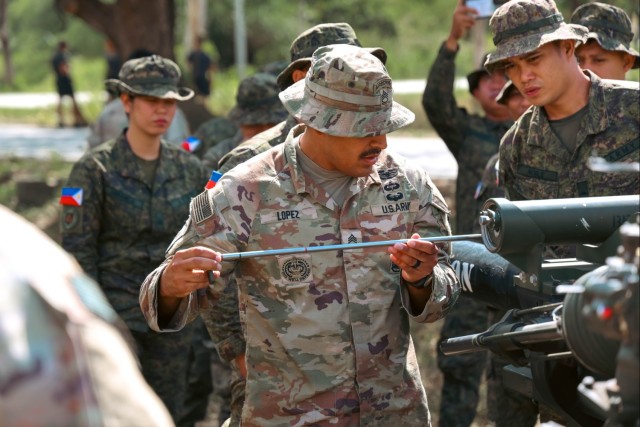
FORT MAGSAYSAY, Philippines — Soldiers from the U.S. Army’s 2nd Battalion, 11th Field Artillery Regiment and the Philippine Army Artillery Regiment conducted joint artillery training on the “Big Three” verification method and the M2A2 aiming circle in preparation for Salaknib 2025 at Fort Magsaysay, Philippines, March 21, 2025.
The training emphasized artillery alignment fundamentals that ensure precision and consistency in fire missions. The “Big Three” verification process — deflection, quadrant elevation and charge — along with the use of the M2A2 aiming circle — a device used to orient artillery before firing — plays a key role in establishing accurate firing data across weapon systems.

Training alongside allies and partners in this setting strengthens both armies’ ability to operate together in complex environments. It also supports the broader mission of increasing regional security and combined lethality.
“When we look to future large-scale combat operations, it's important that we build cohesion and interoperability with our partners,” said U.S. Army 1st Lt. Samuel Walkingstick, platoon leader for 1st Platoon, Alpha Battery, 2-11 FAR. “Exercises like Salaknib allow us to build trust and refine our ability to operate as a unified force.”

In addition to technical alignment procedures, the training gave junior Soldiers exposure to bilateral teamwork and hands-on collaboration with U.S. allies.
“It’s good for younger Soldiers to get outside of the island and to see our partners and really execute and integrate together,” Walkingstick said. “These experiences broaden their perspective and prepare them for real-world missions alongside allied militaries.”
Salaknib 2025 is a bilateral exercise designed to enhance interoperability, capabilities, trust, and cooperation between the Armed Forces of the Philippines and the U.S. military. The training strengthens our decades-long alliance and supports a shared commitment to regional security.



Social Sharing